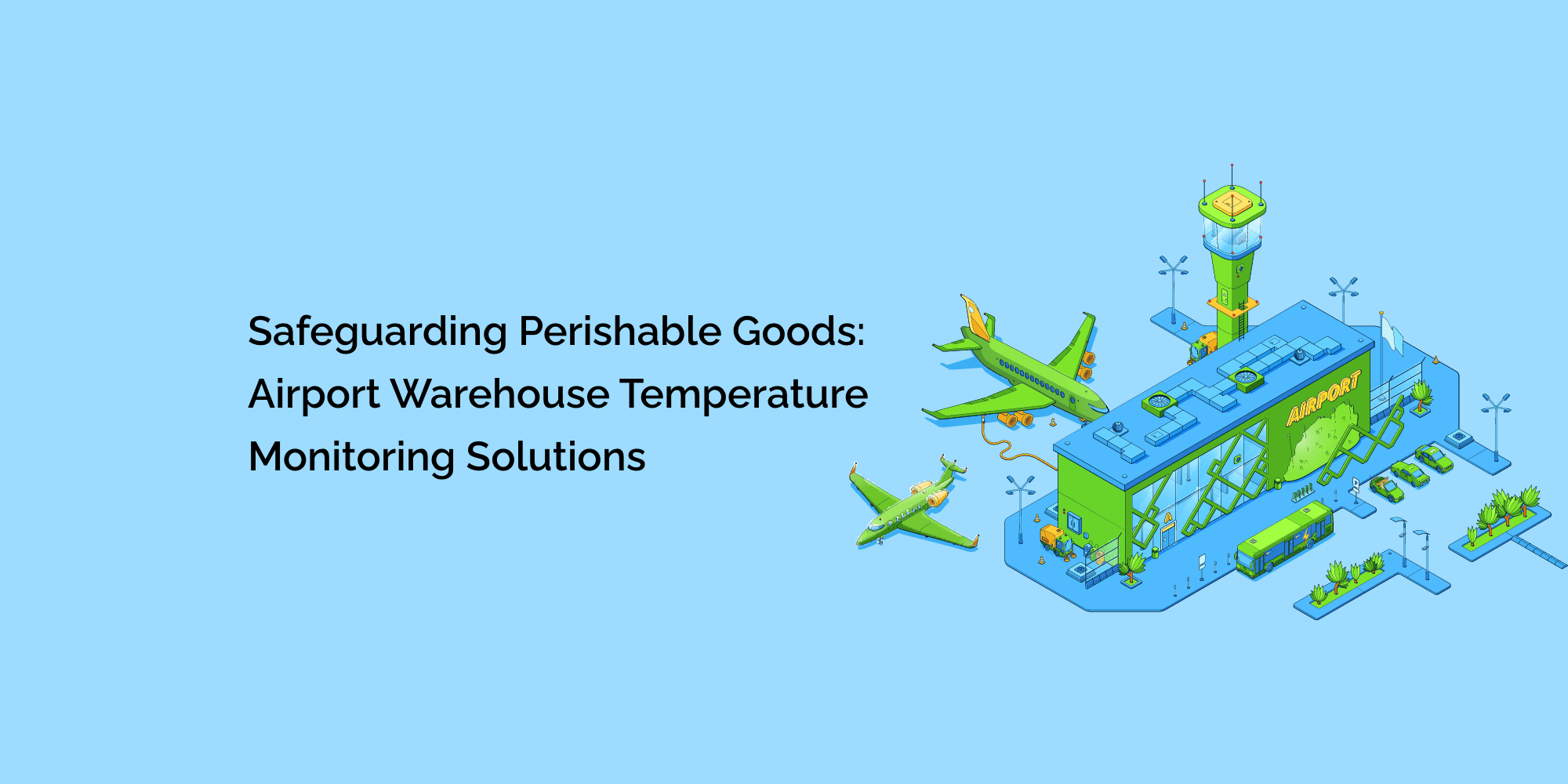Airport warehouses serve as crucial hubs for the storage and distribution of perishable goods, such as fresh produce, pharmaceuticals, and other temperature-sensitive items. Maintaining precise temperature control within these warehouses is essential to ensure the quality, safety, and longevity of perishable goods.
In this blog, we will explore the significance of temperature monitoring in airport warehouses and discuss the various solutions available to safeguard perishable goods through effective temperature control.
The Importance of Temperature Monitoring in Airport Warehouses
Airport warehouses handle a wide range of perishable goods that require specific temperature conditions for preservation. Temperature fluctuations can lead to spoilage, reduced product quality, and even health risks. Therefore, continuous monitoring of temperature is vital to identify and rectify any deviations from the ideal range promptly. Traditionally, temperature monitoring involved manual checks, which were time-consuming and prone to errors. However, advancements in technology have led to innovative solutions that revolutionize temperature monitoring in airport warehouses.
-
Wireless Sensor Networks (WSNs)
Wireless Sensor Networks (WSNs) have emerged as a game-changer in temperature monitoring. WSNs consist of small, battery-powered sensors strategically placed throughout the warehouse to collect and transmit real-time temperature data. This eliminates the need for manual checks and provides a continuous stream of information, enabling warehouse managers to monitor temperature variations instantly.
WSNs can be configured to send alerts when the temperature exceeds predefined thresholds, allowing for prompt intervention. Additionally, WSNs can be integrated with data analytics platforms, enabling in-depth analysis and predictive modeling to optimize warehouse operations and energy efficiency.
-
Internet of Things (IoT) and Cloud Computing
The Internet of Things (IoT) has transformed various industries, and airport warehouses can benefit greatly from its integration with temperature monitoring. IoT enables real-time data collection and analysis by connecting temperature sensors, data loggers, and monitoring devices. These interconnected devices communicate with each other and can be remotely accessed through cloud-based platforms.
IoT-based temperature monitoring systems provide airport warehouse managers with enhanced visibility and control. The data collected from sensors can be analyzed to identify patterns, detect anomalies, and optimize temperature control strategies. Furthermore, cloud-based storage facilitates easy access to historical data and enables collaborative decision-making among stakeholders.
-
Artificial Intelligence (AI) and Machine Learning (ML)
Artificial Intelligence (AI) and Machine Learning (ML) algorithms have the power to transform temperature monitoring in airport warehouses. By analyzing vast amounts of historical temperature data, AI algorithms can learn patterns and predict future temperature trends with remarkable accuracy.
AI-based temperature monitoring systems automatically detect anomalies and deviations from expected temperature ranges, enabling early intervention and prevention of potential issues. These systems can optimize temperature control strategies based on real-time data, ensuring efficient energy usage and minimizing waste.
-
Blockchain Technology
Blockchain technology provides an innovative solution for temperature monitoring in airport warehouses, particularly when it comes to data security and traceability. Each temperature reading can be timestamped, encrypted, and added to a distributed ledger within the blockchain network, establishing a tamper-proof record of temperature data throughout the supply chain.
The decentralized nature of blockchain technology ensures the integrity and traceability of temperature records. This is especially valuable for sensitive goods such as pharmaceuticals, where maintaining the integrity of temperature records is crucial for compliance and quality assurance.
-
Advanced Analytics and Predictive Modeling
Advanced analytics and predictive modeling play a significant role in safeguarding perishable goods in airport warehouses. By analyzing temperature data, these tools can identify trends, patterns, and correlations that may affect the quality of goods.
Predictive models can anticipate temperature fluctuations, enabling proactive measures to maintain the desired temperature range. Additionally, advanced analytics can optimize warehouse operations, improve energy efficiency, and reduce waste by identifying areas for improvement in temperature control strategies.
-
Real-time Monitoring and Alert Systems
Real-time monitoring and alert systems provide immediate notifications when temperature deviations occur in airport warehouses. These systems utilize sensors and monitoring devices to continuously track temperature conditions and promptly alert warehouse personnel when thresholds are exceeded.
Real-time monitoring and alert systems allow for swift intervention, reducing the risk of product spoilage and ensuring the safety of perishable goods. They provide warehouse managers with real-time visibility into temperature conditions, empowering them to make informed decisions and take appropriate actions.
Conclusion
Safeguarding perishable goods in airport warehouses requires precise temperature control and continuous monitoring. With the advancement of innovative solutions such as Wireless Sensor Networks (WSNs), Internet of Things (IoT) integration, Artificial Intelligence (AI) and Machine Learning (ML) algorithms, blockchain technology, advanced analytics, and real-time monitoring systems, airport warehouses can achieve effective temperature control and ensure the quality and safety of perishable goods.
These solutions enable real-time data collection, analysis, and proactive intervention, minimizing the risk of temperature fluctuations and optimizing energy efficiency. By embracing these temperature monitoring solutions, airport warehouses can enhance their operational efficiency, reduce waste, improve product quality, and ensure compliance with stringent temperature regulations. Ultimately, these advancements contribute to the safe and reliable movement of perishable goods within the global supply chain.








